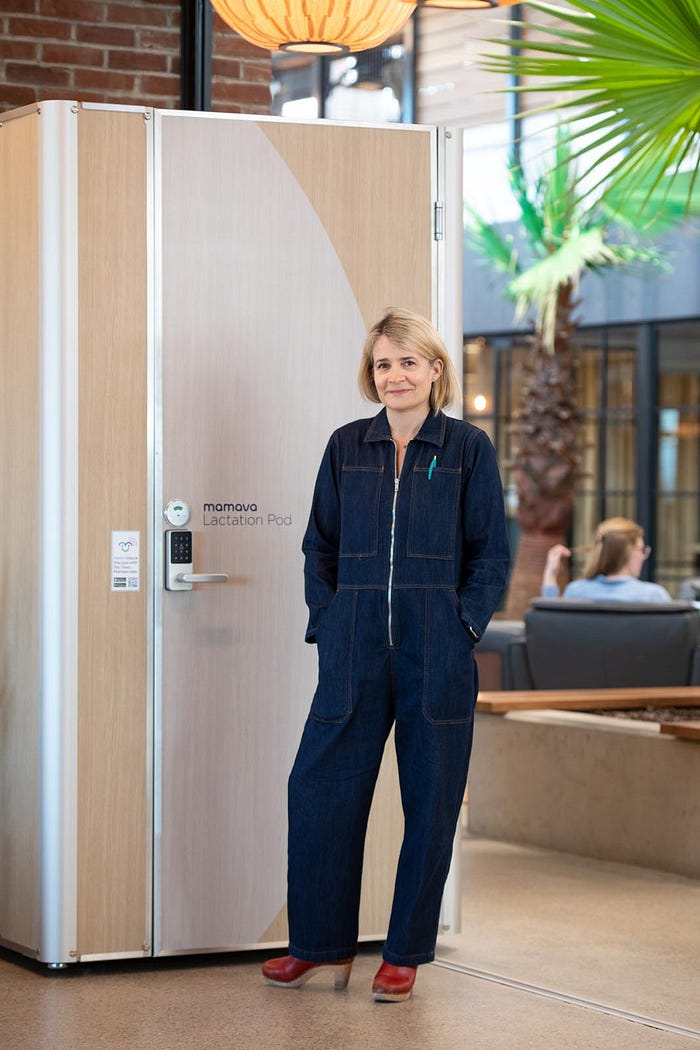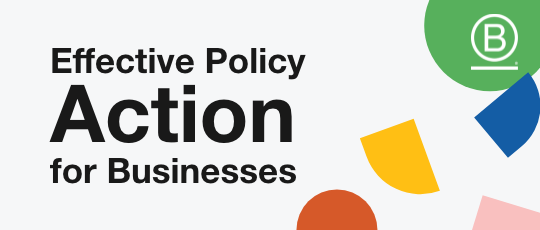The Impact of Storytelling: Inspiring a Service for Breastfeeding Parents
Founder of B Corp Mamava Designs a Solution for Parents on the Go

Mamava was an idea sparked from a story.
When you are creating something from nothing, sometimes a story is all you have. But a good story holds great power.
Storytelling creates empathy by painting a picture that others can see. Throughout human history, stories told through art, literature, religions, and politics have shaped societies and driven culture. In business, the “create a narrative” approach has been credited with making Amazon among the most (financially) successful companies in the world. At Amazon, associates write memos rather than create presentation decks—the idea being that a narrative structure of a well-written business memo leads to better thought, so ideas can’t be bolstered by bullet points or fancy visuals.
This idea of creating a narrative is something we subscribe to at my company, Mamava, where we design and manufacture freestanding lactation spaces. As a design professional I have always relied on pictures to get my ideas across, and I still believe in the power of images, so I take a both/and approach to storytelling.

My Company’s Story Starts Here …
It was Labor Day 2006. I was leisurely reading The New York Times with my 6-month-old child feeding at my breast. The front-page cover image was of a woman setting up to use her breast pump in her totally open office cubicle. On the edge of her cubicle she had taped a paper “do not disturb” sign as her co-workers walked by in the background. Her pump parts were spread out to dry on her desk beside her computer.
The article, “On the Job, Nursing Mothers Find a 2-Class System,” was written by Pulitzer Prize-winning journalist Jodi Kantor and described the two-class system that had emerged around breastfeeding. Women who could choose to stay home with their infants — or had the power and autonomy at work to assert their needs for break time and a space to use a breast pump — were successfully meeting their breastfeeding goals.
Yet the vast majority of working women simply didn’t have access to lactation accommodations at work and had to stop breastfeeding as a result. Kantor’s reporting revealed the ways in which the workplace was a barrier to breastfeeding and one reason breastfeeding rates for American mothers plummeted so drastically at three months, just when most mothers returned to work.
I was lucky enough to have a supportive employer and a private office, but I knew many mothers who lacked both. While all parents are inundated with messages and statistics about the health benefits of breast milk, all too often it isn’t a true choice for many women. Kantor’s article brought to the surface what I was beginning to understand: that this fundamentally human function that sustains life had become a privilege not a right. In a world with designs, products, and services for almost all aspects of our lives, there was little to no design for the infrastructure and support that breastfeeding parents needed.
My personal struggles with breastfeeding came when I traveled to meet with clients or attend trade shows and conferences. In these circumstances, I was often forced to use my breast pump in the only private location freely available—a bathroom.
I was preparing food in a location designed for the exact opposite function.
I was an exhausted new mother, away from my family, half dressed in a toilet stall, and attached to this robot baby feeling demoralized, undignified, and alone.
But of course I wasn’t alone. At conferences and work events, I’d see other breastfeeding parents slinking away with the telltale signs of the nondescript black nylon pump bags and the bags under the eyes. Once I started looking and asking, I saw these new mothers everywhere — teachers, nurses, doctors, and clerks — and realized that we were all suffering the same indignities. Some of us were able to stick with breastfeeding, while others had to opt out of breastfeeding altogether.

Why were these women so visible to me but so invisible to the broader culture? As a mother, I had had enough. As a design professional, I was inspired by the opportunity to solve a problem that was literally right under my nose.
Telling a Story and Building a Business
I told this story of Kantor’s article and my personal light bulb moment over and over again as I built Mamava. First, I told the story to my colleagues and my co-founder at the design studio where we incubated the idea for a freestanding lactation suite. These were people who believed design could build a better world, so of course they understood. And yes, we used images to tell the story, including an image of a woman pumping in a bathroom stall.
Then we told the story to investors, bankers, facilities managers, and manufacturers until we had a prototype we could put in the world.
In August 2013, almost seven years to the day from the publication of The New York Times article, we placed our first Mamava lactation pod at the Burlington International Airport. The local news covered the event, and the story got picked up by USA Today and was covered by hundreds of other news outlets across the country.
What happened next was amazing. With little more than a rudimentary website, email address, and phone number, we started hearing from people all over the country.
Some calls were from early adopters looking to buy pods. One was from a woman who wanted to work for us (we eventually hired her, and she is still with us to this day).
We heard from women who quit jobs they loved because they didn’t have the support they needed at work. We heard from others who felt like failures because they weren’t able to breastfeed after returning to work. We heard from stay-at-home dads looking for ways to support their partners, and baby boomer grandparents who were recognizing the importance of breastfeeding for the first time.

These stories connected our first customers and advocates to our brand (our lactivists), and they have inspired the work we do. As each new generation of parents learns our story — and we learn theirs — it creates a cycle of gratitude that is so important to a mission-driven company.
In 2015, when I finally left my design job to work on Mamava full time, we were about to place Mamava pods in all of the New York City airports. I wrote to Jodi Kantor to thank her for the original story that sparked it all. I told her about our idea for freestanding lactation spaces and the business we were building. She was so astounded that her article had made such an impact that she wrote about it: “On Breast Milk and High-Impact Journalism.”
The story had come full circle.
Our work at Mamava continues to be driven by stories and storytelling — as we give voice and support to the millions of working parents who need lactation accommodations, and as we help organizations and employers understand what breastfeeding parents need.
B The Change gathers and shares the voices from within the movement of people using business as a force for good and the community of Certified B Corporations. The opinions expressed do not necessarily reflect those of the nonprofit B Lab.


